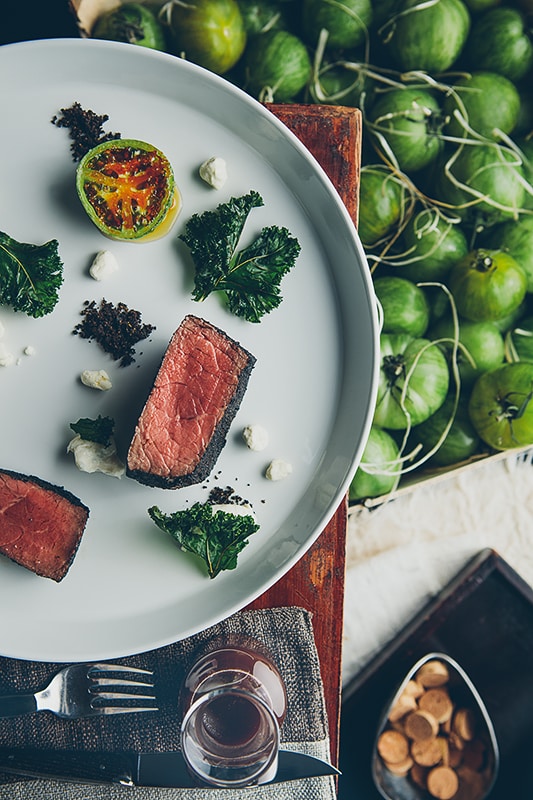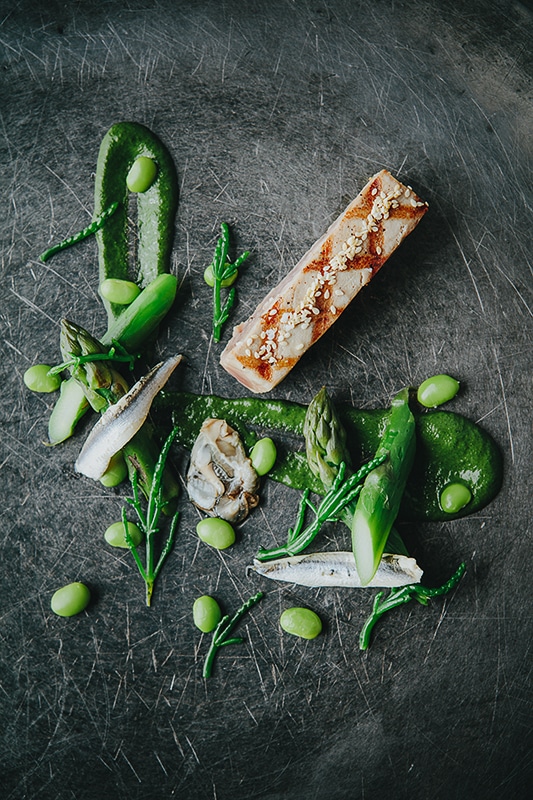
We’re back again capturing the art an flavors of The Chedi, Muscat this year with Executive Chef Sébastien Cassagnol’s brand new menu. An inspiring set of dishes across three restaurants. However, instead of just showing some images from our production, I thought I’d speak a little bit about how I find my creative spark on location and under deadline.
THE DUCK
This year’s theme focuses on duck raised in Cassagnol’s village in France. I always look forward to working with Chef Sébastien, beyond being a perfectionist in his craft with a deep love for food, he cooks with honesty. In the video below Sébastien Cassagnol brings the world to Oman’s tables with this classic French dish.


CREATIVITY VS CRAFT
I know a lot of photographers that say their job can get repetitive at times. At first the vision was new and exciting, but after a while all the compositions and subjects blur together and that creative spark becomes harder and harder to ignite. It can be difficult to get it back and when there is the pressure to perform, it can be damn painful.
My craft is a lot easier for me to explain it’s a recipe. A straight line instead of a mass of tangled pieces strung together. Our craft, the techniques and tools we use, are just choices. We get inspired and choose the tools that will bring our vision into reality. In this way, creativity dictates craft. Even though I know this to be true, I still find it challenging to cultivate creativity in the moment.


I just fninshed reading a beautiful post by David duChemin about the rhythm of creativity and it got me thinking about my own process of becoming inspired when on location. Getting creative when photographing food can sometimes be difficult, because lets face it, there are only so many ways you can move a circular dish around a square frame.
More...
To be brutally honest, unless I’m the cook, I’m photographing another person’s creative work. I’m recording their passion with my own. And it’s hard to find inspiration when you’re not 100% invested in the subject. To the chef, I’m a stranger who is there to pry into their personal work. I literally invade their creative/work space. Even worse, I speak for their craft and art, through mine.
The pressure builds, because maybe my art sucks. And if my art sucks, then their hard work will amount to nothing on the photographs.
Of course if the food lacks passion, photography finds a way of being pretty honest as well.
So you need a process to cultivate on-demand creativity. To become inspired in a situation that may be un-inspiring, or starting to feel like a routine.


How I Find My Creative Spark
What I find helps is listening to the chef describe their creations. I love the origin story behind their dishes and it’s really the best place to start to get to know the chef and their food. Understanding their vision and craft makes me excitedly explain what I can do and how I can visually bring those thoughts from the ether in to reality. From this blast of creative discussion comes the plan and with it, mutual confidence before the first images hits the sensor.


THE DIFFICULTIES OF FARMING CREATIVITY
A lot of the time, as photographers, I feel like we often approach creativity in two ways.
One is the prodigal farmer, just throwing seeds out a handful at a time; machine-gunning pictures hoping one will sprout into perfection.
The other type plants with economy, careful to not waste frames until inspiration hits.
Sure, in both approaches we’re putting ourselves out there, with the right light, the right subjects, and sometimes both will bring us equal success. There is no right approach to every scenario, but more often than not, I find that being too selective leaves little room for creativity to flourish.


The biggest problem with being so economical is that the best photos are rarely made on the first click. Or even the second. What’s worse is that you might be forever waiting; it’s called, “blank canvas syndrome” when every moment or angle is better than the last, leaving you stranded by indecision and unable to make the first stroke. You have to create, to be creative.


Being the frame waster is like standing in a huge field, unsure where to plant the first seed, so instead of strategically planting one you start chucking as many as you can because on the ground, every spot seems great, each ridge is as good as the next.
However, from the two approaches I see myself doing the latter a lot more than I used to and I’m starting to think it’s not such a bad thing. At one time I was pretty stingy, but the more I started working the subjects the faster my images would lead me to the moment.
I say “lead me” because it’s only through this process of weeding out the good from the bad of each random attempt that gives rise to the proverbial back step. A pause to survey the field from above and find that perfect place which plants itself inside your brain and moves you towards something a little truer, a little more revealing than what was floating on the surface.


This process for me is important to go through. I’ve learned to recognize and even anticipate it. To just let the photos rattle off, not worrying about the perfect image with the first click. It’s an exploration and it cleanses the system, bringing the inspiration that might be lurking under the surface into focus. It helps me to get rid of all the junk ideas or implausible scenarios. A strategy to combat the “blank canvas syndrome” where fears, hesitation and over-thinking cripples me before I even start.
David duChemin on a post titled Creativity: Find Your Rhythm, said, “Our creative life, the very nature of how most of us work internally, is rhythmic. Brilliant creativity is unsustainable day-to-day.” I find this true inside a single production, or even shot to shot.


All these first, second and third takes on a subject, all the crap mediocre photos in the beginning, build momentum toward that inspiring moment when during the act of creating, I end up finding my creativity. Or maybe it ends up finding me.
How do you keep your creative sparks flying? Let me know in the comments below.